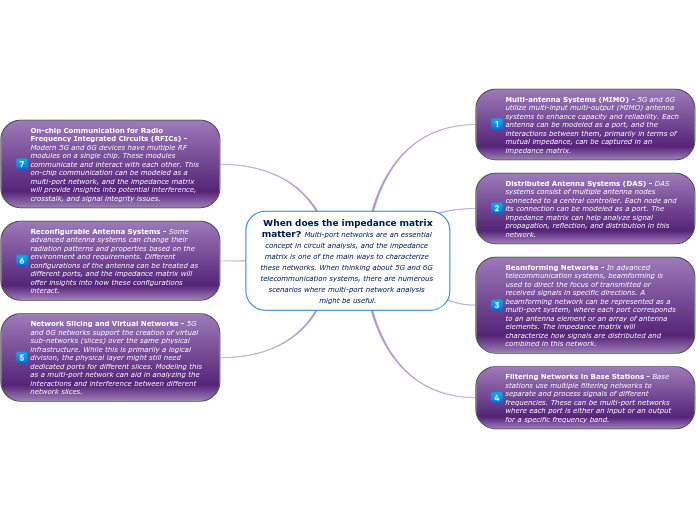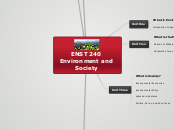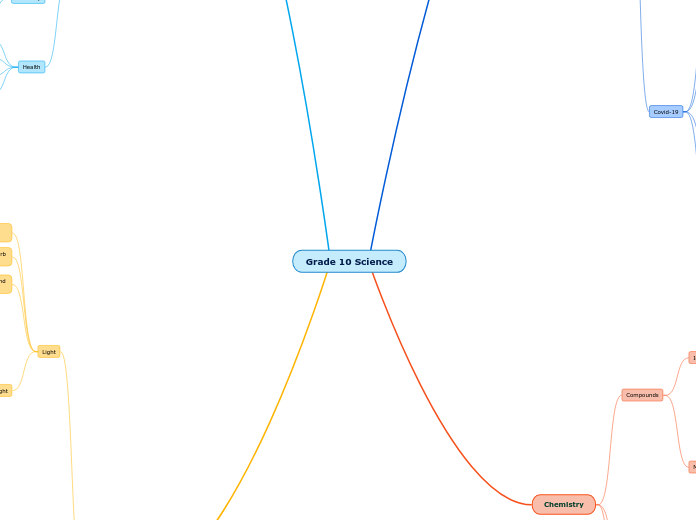When does the impedance matrix
matter? Multi-port networks are an essential concept in circuit analysis, and the impedance matrix is one of the main ways to characterize these networks. When thinking about 5G and 6G telecommunication systems, there are numerous scenarios where multi-port network analysis might be useful.
Type in the name of the topic from your learning material.
Network Slicing and Virtual Networks - 5G and 6G networks support the creation of virtual sub-networks (slices) over the same physical infrastructure. While this is primarily a logical division, the physical layer might still need dedicated ports for different slices. Modeling this as a multi-port network can aid in analyzing the interactions and interference between different network slices.
Reconfigurable Antenna Systems - Some advanced antenna systems can change their radiation patterns and properties based on the environment and requirements. Different configurations of the antenna can be treated as different ports, and the impedance matrix will offer insights into how these configurations interact.
On-chip Communication for Radio Frequency Integrated Circuits (RFICs) - Modern 5G and 6G devices have multiple RF modules on a single chip. These modules communicate and interact with each other. This on-chip communication can be modeled as a multi-port network, and the impedance matrix will provide insights into potential interference, crosstalk, and signal integrity issues.
Filtering Networks in Base Stations - Base stations use multiple filtering networks to separate and process signals of different frequencies. These can be multi-port networks where each port is either an input or an output for a specific frequency band.
Beamforming Networks - In advanced telecommunication systems, beamforming is used to direct the focus of transmitted or received signals in specific directions. A beamforming network can be represented as a multi-port system, where each port corresponds to an antenna element or an array of antenna elements. The impedance matrix will characterize how signals are distributed and combined in this network.
Distributed Antenna Systems (DAS) - DAS systems consist of multiple antenna nodes connected to a central controller. Each node and its connection can be modeled as a port. The impedance matrix can help analyze signal propagation, reflection, and distribution in this network.
Multi-antenna Systems (MIMO) - 5G and 6G utilize multi-input multi-output (MIMO) antenna systems to enhance capacity and reliability. Each antenna can be modeled as a port, and the interactions between them, primarily in terms of mutual impedance, can be captured in an impedance matrix.
Add a concept you've learned about in the given material, then explain it by adding at least 3 details.
Detail
Add detail about the concept mentioned.









